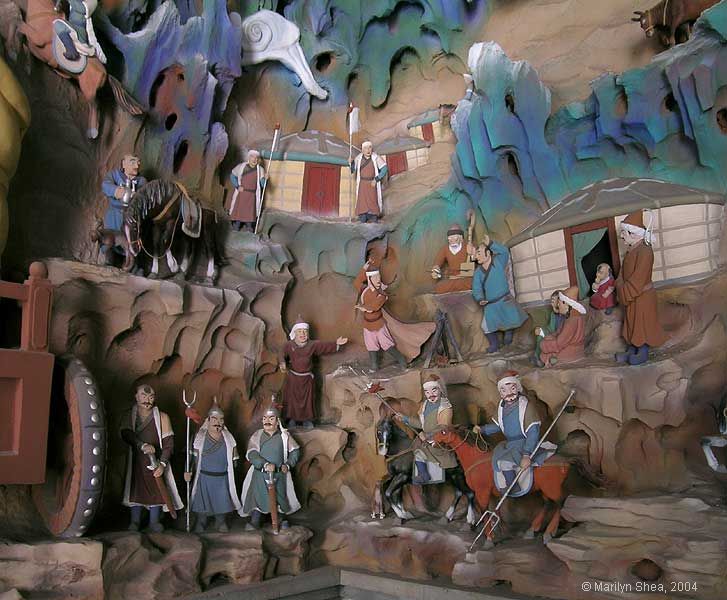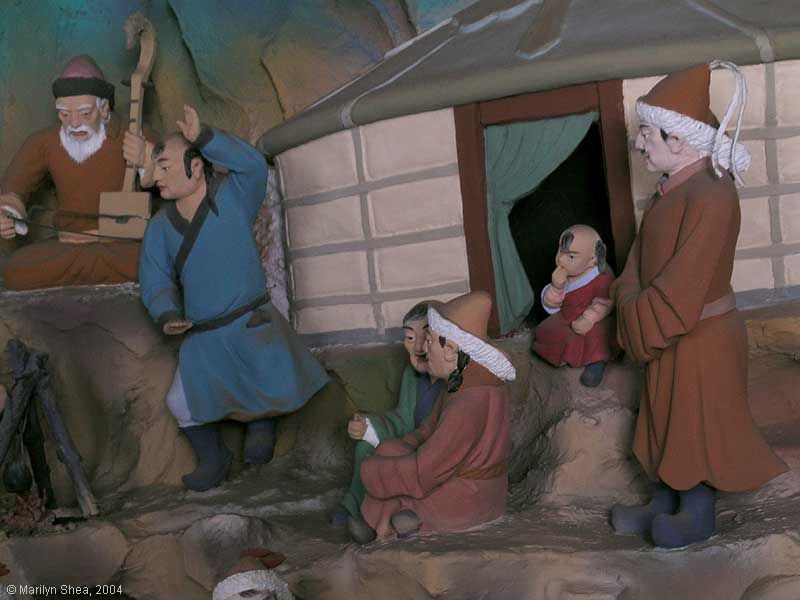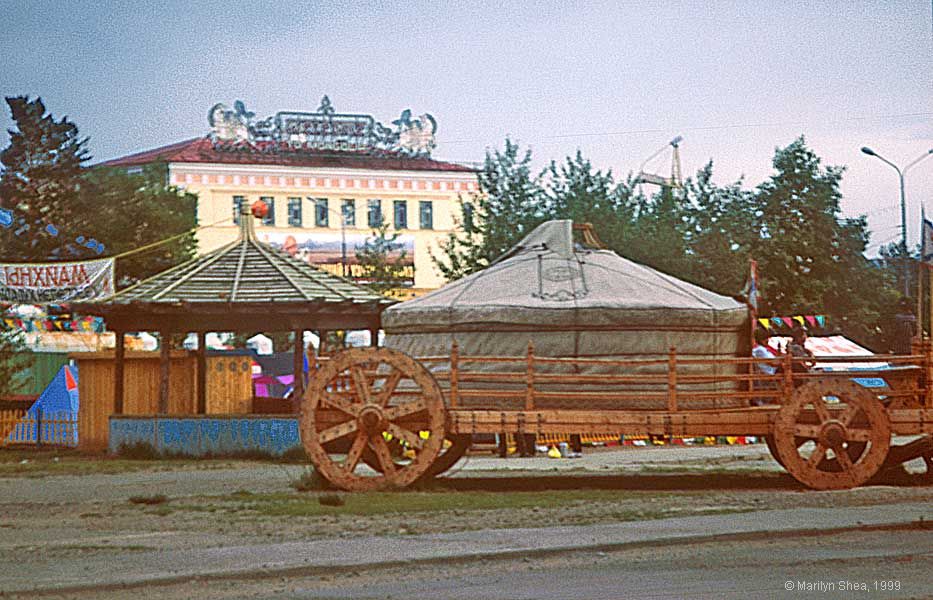On the 1st of the fourth month (April 23), 1221, we reached the encampment of the prince O-ch'en At that time the ice was only beginning to melt, and the first green was seen on the ground. There was a wedding being celebrated, and many Mongol chiefs had arrived with mare's milk. We saw several thousands of black carts and felt tents standing in long rows. On the 7th (April 29) the master was presented to the prince, who asked him about the means of prolonging life. As it would have been unbecoming that the prince should hear the precepts of the master before the master had seen the emperor, it was agreed that on his return the master should call again on the prince. On the 17th the prince ordered that a hundred horses and bullocks should be given to expedite the master, and we started again (May 9).
Our way led in a north-western direction. On the 22d of the fourth month (May 14) we reached the river Lu-kü (or Kerulun), which here forms a lake of several hundreds of li in circumference. When the waves rise by the wind, great fish are thrown out, and the Mongols catch them easily. We then went along the southern shore of the river (Kerulun). We found abundance of ye hie everywhere. On the 1st of the fifth month (May 23), at noon, an eclipse of the sun happened, while we were on the southern bank of the river. It was so dark that the stars could be seen, but soon it brightened up again. In this country it is cold in the morning but warm in the evening. We saw huang hua (yellow flowers) in abundance. The river flows to the north-east. On both banks of it are many high willow trees, which the Mongols use for making their tents.
After a journey of sixteen days (up the Kerulun, along its southern bank), we arrived at the place where the river changes its direction, winding round the hills to the north-west. We could ascertain nothing about its sources. Farther to the south-west we reached the post-road, which leads to Yü rh li. The Mongols here were very glad to see the master. They brought him millet, and said that they had been waiting for him for a year. The master made them a present of jujubes. They had never before seen this fruit.
From this we travelled ten days. At the time of the summer solstice the shadow (of the gnomon) measured three feet six or seven inches.
Here we noticed the peaks of high mountains; the country we traversed westward was throughout mountainous or hilly.
The population was numerous, all living in black carts and white tents. The people are engaged in breeding cattle and hunting. They dress in furs and skins, and live upon milk and flesh-meat.
The men and unmarried young women plait their hair so that it hangs down over their ears. The married women put on their heads a thing made of the bark of trees, two feet high, which they sometimes cover with woollen cloth, or, as the rich used to do, with red silk stuff. This cap is provided with a long tail, which they call yu-yu, and which resembles a goose or duck. They are always in fear that somebody might inadvertently run against this cap. Therefore, when entering a tent, they are accustomed to go backward, inclining their heads.
These people (the Mongols) have no writing. They settle their matters by verbal convention, and when they enter into contracts they cut certain marks on wood. They are never- disobedient to orders, and never break their word. They have preserved the customs of the early ages.
Farther on, after four stations, to the north-west we crossed a river beyond which a plain extended with luxurious grass and abounding in water. The plain was surrounded by mountains with picturesque valleys. On the east and on the west (of the river?) we saw the ruins of an ancient city. We could recognise the position of the streets. There is a tradition that this city was built by the K'i-tan. We found, indeed, on the soil a tile with letters of the K'i-tan. This was probably a city founded by those K'i-tan warriors who emigrated, unwilling to submit to the new dynasty. We were told, also, that the city of Sün-sz'-kan (Samarkand) lay more than 10,000 li to the southwest, that it was built on the best place in the country of the Hui-ho (Mohammedans), and that it was the capital of the K'i-tan dynasty, of which seven emperors had reigned there.
Continued ===>>>
pp. 50-55, E. Bretschneider's Mediæval Researches from Eastern Asiatic Sources. (New York: Barnes & Noble, 1888).


